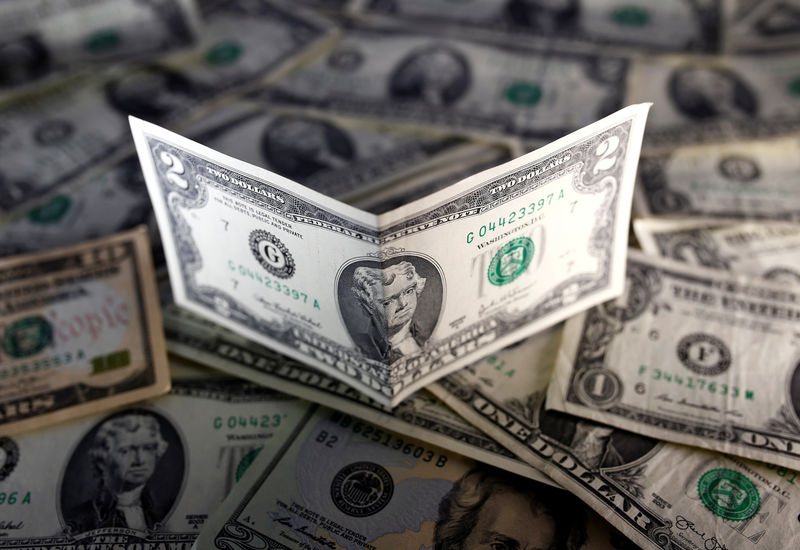By Gina Lee
Investing.com – The dollar was down on Wednesday morning in Asia but clung onto its recent gains. Investors digested the worsening spread of COVID-19's more virulent Delta strain while awaiting U.S. jobs data crucial to the direction of the U.S. Federal Reserve's monetary policy.
The U.S. Dollar Index that tracks the greenback against a basket of other currencies inched down 0.01% to 92.030 by 12:18 AM ET (4:18 AM GMT). It rose 0.2% to hit a one-week high during the previous session.
The USD/JPY pair inched down 0.02% to 110.48. Data released earlier in the day in Japan said industrial production fell by a worse-than-expected 5.9% month-on-month in May.
The AUD/USD pair edged up 0.19% to 0.7525 and the NZD/USD pair edged up 0.18% to 0.7002.
The USD/CNY pair inched down 0.10% to 6.4572. Chinese data released earlier in the day said that the manufacturing purchasing managers' index (PMI) was a better-than-expected 50.9 for June, while the non-manufacturing PMI was 53.5, lower than May’s reading of 55.2.
The GBP/USD pair edged up 0.13% to 1.3853.
"There's a bit of a bearish tilt to currencies... it’s the line you would expect on a risk-off day, and maybe it's a bit of insurance ahead of non-farm payrolls," Westpac analyst Sean Callow told Reuters, referring to the U.S. jobs report due on Friday.
The dollar remained near the middle of the range it has found after the Fed's hawkish tone in its latest policy decision, handed down earlier in the month, spooked markets.
The spread of the virulent Delta strain of the COVID-19 virus in several countries has also decreased investors’ risk appetite. Rising numbers of cases involving the strain in Australia have already led to renewed lockdown measures in four cities and the spike in numbers also poses a threat to the global economic recovery from COVID-19.
Also on the data side, investors await the U.S. jobs report for June, including non-farm payrolls, due on Friday. The ADP nonfarm employment change will also be released later in the day, ahead of the report.
A strengthening labor market could prompt the Fed to taper assets and hike interest rates earlier than expected, giving the dollar a boost. However, weaker-than-expected data will leave the greenback in a vulnerable position.
"It's unusually hard to forecast and so the risk of a surprise is enormous... super strong could really reinforce the reaction to the (Fed) and very weak could really push back on those who bought dollars post-Fed," said Westpac's Callow.
Other investors sought to take a wider view of the U.S. labor market data.
"It's not just about non-farm payrolls, but about the whole labor market," with hourly earnings and the unemployment rate also likely to be closely watched, National Australia Bank (OTC:NABZY) senior FX strategist Rodrigo Catril told Reuters.
"There's also a wide dispersion in terms of estimates which suggests that either way there will be a few disappointed with a soft number as well as a really strong number,” Catril added.
